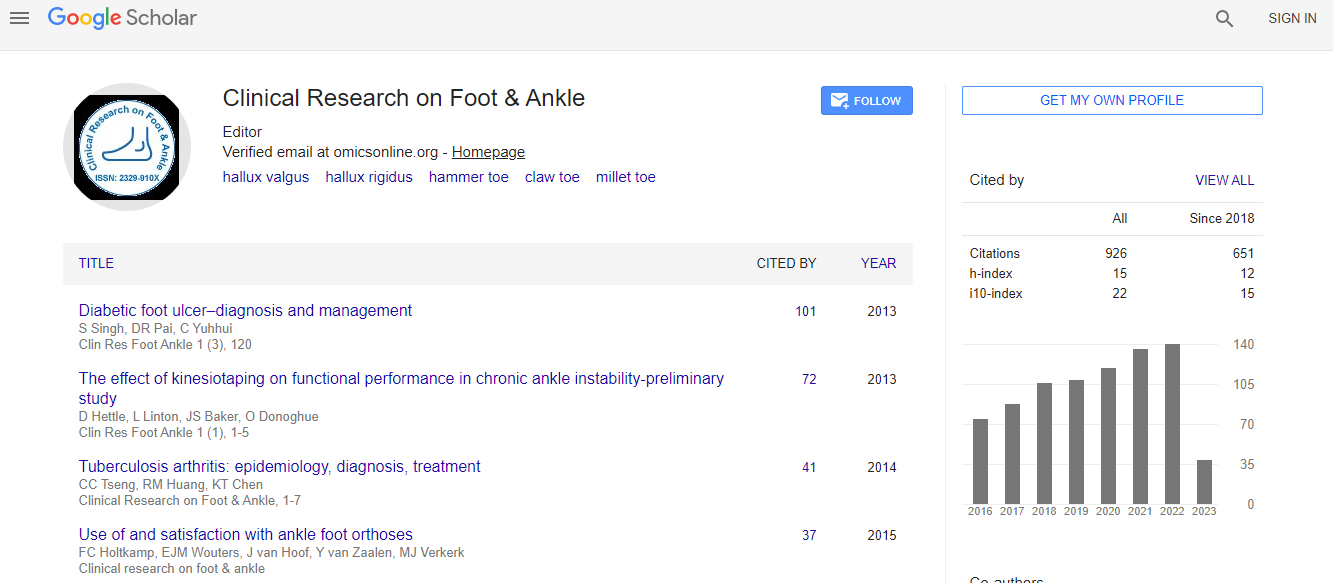Review Article
Diabetic Foot Ulcer-Diagnosis and Management
| Simerjit Singh*Dinker R Pai,Chew Yuhhui | ||
| Department of Orthopaedics, Melaka Manipal Medical College, Jalan Batu Hampar, Bukit Baru, Melaka, Malaysia | ||
| Corresponding Author : | Dr. Simerjit Singh Department Of Orthopaedics, Melaka Manipal Medical College Jalan Batu Hampar, Bukit Baru, Melaka, Malaysia Tel: (606) 2925849/50/51 Fax: (606) 2817977 E-mail: Simer1980@Yahoo.Com |
|
| Received September 27, 2013; Accepted October 30, 2013; Published November 07, 2013 | ||
| Citation: Singh S, Pai DR, Yuhhui C (2013) Diabetic Foot Ulcer - Diagnosis and Management. Clin Res Foot Ankle 1:120. doi:10.4172/2329-910X.1000120 | ||
| Copyright: © 2013 Singh S, et al. This is an open-access article distributed under the terms of the Creative Commons Attribution License, which permits unrestricted use, distribution, and reproduction in any medium, provided the original author and source are credited. | ||
Related article at Pubmed Pubmed  Scholar Google Scholar Google |
||
Abstract
Diabetes Mellitus is known to have many complications and one of the most distressing is diabetic foot ulcer which affects 15% of people with diabetes. It puts enormous financial burden on the patient and the health care services, even though it is preventable. Diabetic foot ulcer is characterized by a classical triad of neuropathy, ischemia, and infection. Each of these has a multifactorial aetiopathogenesis. These factors are compounded by mechanical stress created by foot deformities. The most commonly used classification systems are the Wagner-Ulcer Classification system and the University of Texas Wound Classification. These classifications help to predict the outcome of this condition. Prevention of this condition is paramount to prevent long term morbidity and sometimes mortality. This can be achieved by patient self-awareness and emphasis on regular foot examinations during follow-up. Care of the diabetic foot should be multidisciplinary. Debridement, dressings and offloading are the pillars of local management. Simultaneous glycemic and infection control is also essential. Amputations are usually the treatment of last resort but occasionally can be considered early to allow for faster mobilization and rehabilitation. Causative factors like peripheral vasculopathy and neuropathy must also be appropriately treated.

 Spanish
Spanish  Chinese
Chinese  Russian
Russian  German
German  French
French  Japanese
Japanese  Portuguese
Portuguese  Hindi
Hindi 
